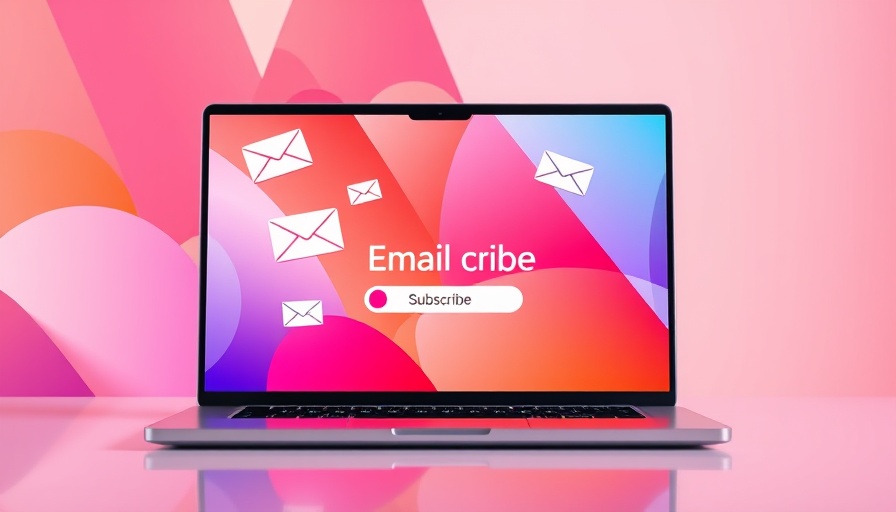
Unveiling the Secrets of Social Media and SEO Integration
In the ever-evolving digital landscape, social media and SEO (Search Engine Optimization) go hand-in-hand in driving organic traffic and improving visibility. For digital marketers, agencies, and small-to-medium businesses (SMBs), understanding how to integrate these two powerful tools is crucial for maximizing client acquisition. Effective social media SEO strategies can enhance your brand's online presence, boost website performance, and generate valuable leads.
1. Optimize Your Social Media Profiles for SEO
One of the first steps in implementing effective social media SEO is to ensure that your profiles are fully optimized. This means using relevant keywords in descriptions and posts, keeping your brand messaging consistent, and making information easily accessible. Use your website's URL in your profiles, and consider utilizing tools like marketing automation to monitor engagement and drive traffic to your site.
2. Create Shareworthy Content
Producing high-quality, engaging content that resonates with your audience is fundamental for social media success. Content that encourages sharing not only garners more attention on social networks but also enhances SEO by generating backlinks to your website. Share statistics, how-to guides, and thought-provoking articles to prompt discussions and shares.
3. Leverage User-Generated Content (UGC)
User-generated content can significantly enhance your brand's credibility and provide fresh content for your social media channels. Encouraging customers to share their experiences or feedback on your products not only fosters community but also boosts SEO through additional mention of your brand across platforms.
4. Utilize Hashtags Effectively
Hashtags are not just trendy phrases; they serve as a critical element in organizing content. By using relevant hashtags, your posts have the potential to reach beyond your current followers. This exposure not only increases your chances of being discovered but can also improve your site’s overall search engine ranking.
5. Engage with Followers for Better Search Rankings
Interaction on social media goes beyond posting content. Engaging with followers by responding to comments, messages, and mentions demonstrates your commitment to customer service. Platforms that value engagement often reward brands that foster community with better search rankings.
6. Share Content Across Multiple Channels
To maximize reach, ensure that your content is shared across various social media platforms. This cross-promotion can drive traffic from multiple channels to your official website, boosting your SEO efforts. Consider automating your sharing process to save time and ensure consistency.
7. Monitor Analytics for Optimization Insights
Using tools that provide analytics on your social media performance helps you understand what content drives traffic and engages users the most. By analyzing these insights, you can refine your content strategy, enhance lead generation, and adjust your SEO tactics accordingly.
8. Connect Social Media to Your Sales Funnels
Integrating social media strategies with sales funnels can significantly streamline your marketing efforts. Ensure that your social profiles link to lead magnets or direct customers towards your CRM systems for effective lead tracking and nurturing.
9. Stay Updated with SEO Best Practices
The digital world evolves rapidly; hence staying updated with the best practices in SEO is vital. Subscribe to marketing newsletters and journals to get insights and trends, ensuring that your strategies stay aligned with current SEO requirements.
10. Explore Paid Advertising Options
While organic reach is crucial, investing in paid advertisements can enhance your visibility even further. Consider using targeted ads on social platforms to attract customers at various stages of the buyer's journey, improving both lead generation and search engine visibility.
11. Create a Competitor Analysis
Understanding what your competitors are doing can provide valuable insights. Explore their social media strategies, identify their strengths and weaknesses, and adapt your approach accordingly. This analysis can guide you in crafting your unique selling proposition.
12. Encourage Reviews and Testimonials
Encouraging satisfied customers to leave reviews can enhance your online reputation and influence potential buyers. Positive reviews on social media not only build trust but can also improve your search engine ranking as more users discuss your brand online.
13. Use Visual Content
Incorporating visual content like infographics, tutorials, and videos can boost engagement on social media, driving more traffic back to your website. Search engines often rank pages with rich media higher, making it a dual win for SEO and user experience.
14. Ensure Mobile Responsiveness
With a significant portion of social media activity taking place on mobile devices, optimizing for mobile is essential. A mobile-responsive website fosters better user experience, increasing the likelihood of shares and engagements, ultimately enhancing SEO performance.
In conclusion, integrating social media and SEO can significantly benefit digital marketers and small to medium-sized businesses in achieving enhanced visibility and lead generation. By adopting these strategies, businesses can not only drive traffic and boost customer engagement but also stay ahead in the competitive digital marketing landscape. For more insights and tools on marketing automation and effective lead generation strategies, consider downloading our free SEO starter pack today!
 Add Row
Add Row  Add
Add 




Write A Comment